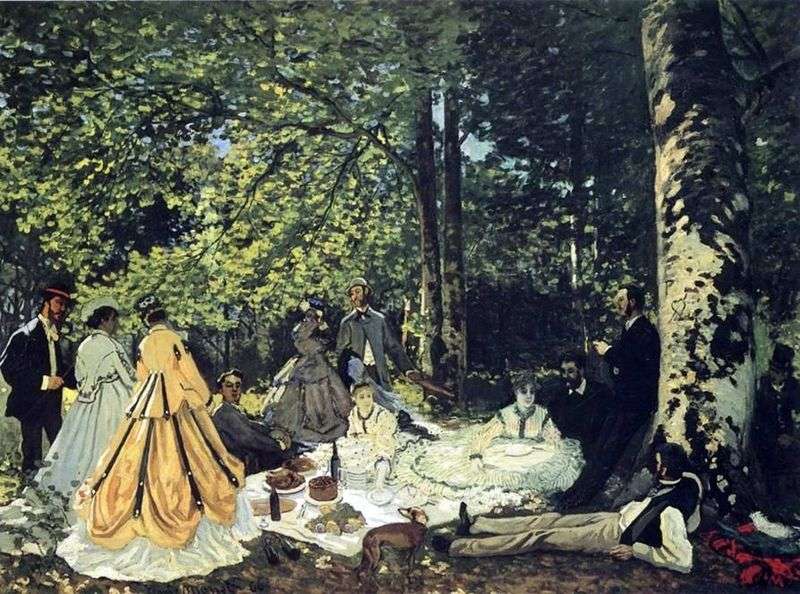
In 1865, the famous French artist Claude Monet created one of his most famous works, Breakfast on the Grass. He is one of the founders of impressionism, since it was his painting that initiated this artistic direction, and he also made a huge contribution to the development of painting in Europe.
The artist’s painting of the same name by Eduard Manet, written in 1863, inspired the artist to paint the picture. The picture of Edward caused a lot of discontent and scandals, as the picture shows a naked lady, next to which two men sit imposingly admiring her body. At that time, such a topic was considered inexpressibly audacious.
Claude began to write his version of the work with sketches, which he wrote from the picturesque views of the forest of Fontainebleau, where he also wrote many beautiful paintings, such as “The Road to Bass Bro, Fontainebleau”. People the artist wrote in the studio. At the end of the canvas, the artist masterfully enters into the wonderful landscape the silhouettes of the resting people.
In the picture, the viewer sees a group of people of noble birth, who decided to relax in nature, have a picnic under the tall dense trees of the forest. Upon careful consideration of the picture in the near tree, you can see the heart carved on the bark with a knife, this sign hints at the romantic mood of the artist, in which he arrived at the time of writing the canvas.
Monet was a master of chiaroscuro. Everything in the picture is permeated by sunlight, which penetrates the clearing through the leaves of the trees. The artist has long tried to find the balance of light, so there is so much of it in the picture. Light everywhere, emphasizes every fold on ladies’ dresses, reflected in the foliage and trunks of trees.
Unfortunately, the artist was not able to finish writing this picture, because when it was created, he was also engaged in other paintings, and in 1878 he had nothing to pay for housing, and he left this picture as a pledge. A few years later, he still tried to continue working on the painting, but some of its parts were damaged by moisture, so the artist simply cut off the damaged parts of the canvas, thus he cut off most of his ideas, leaving only a part of it that is currently in the Louvre. A sketch of the picture, made by Claude Monet, is stored in Moscow, in the Pushkin Museum of Fine Arts.
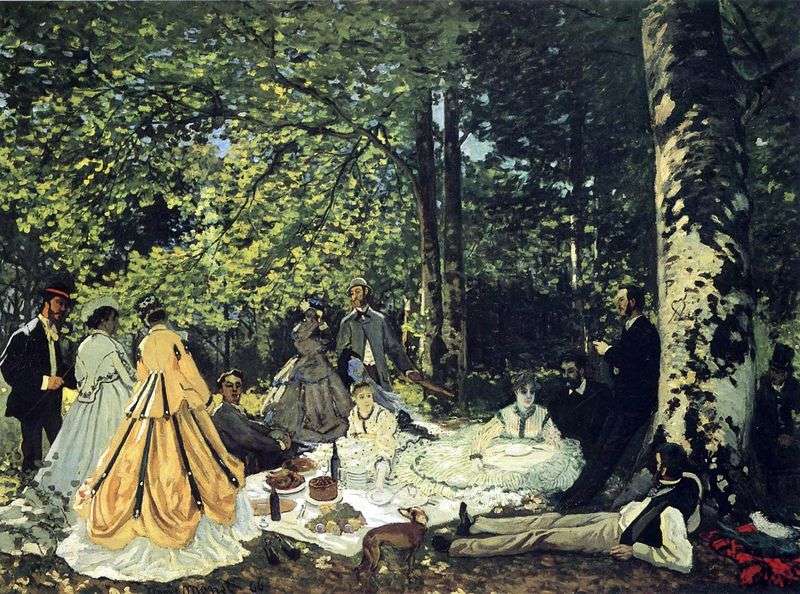 Picnic on the grass, Chailly by Claude Monet
Picnic on the grass, Chailly by Claude Monet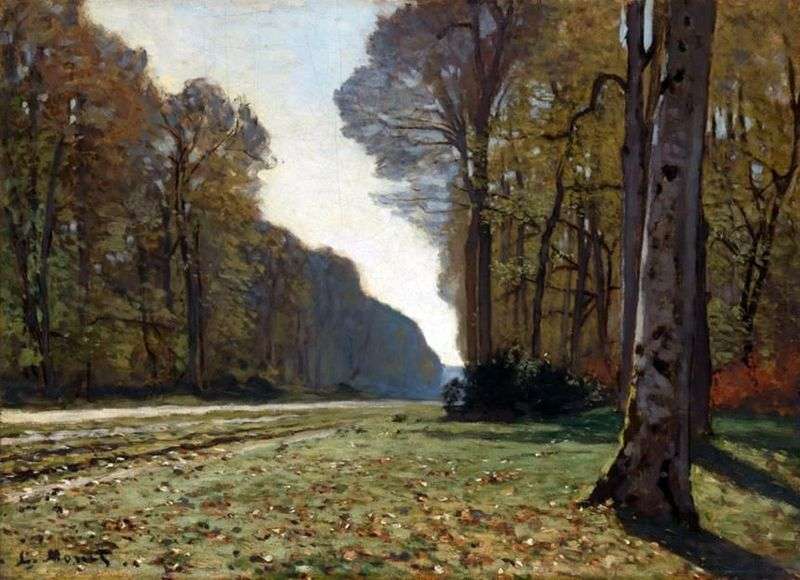 The road to Bass Bro, Fontainebleau by Claude Monet
The road to Bass Bro, Fontainebleau by Claude Monet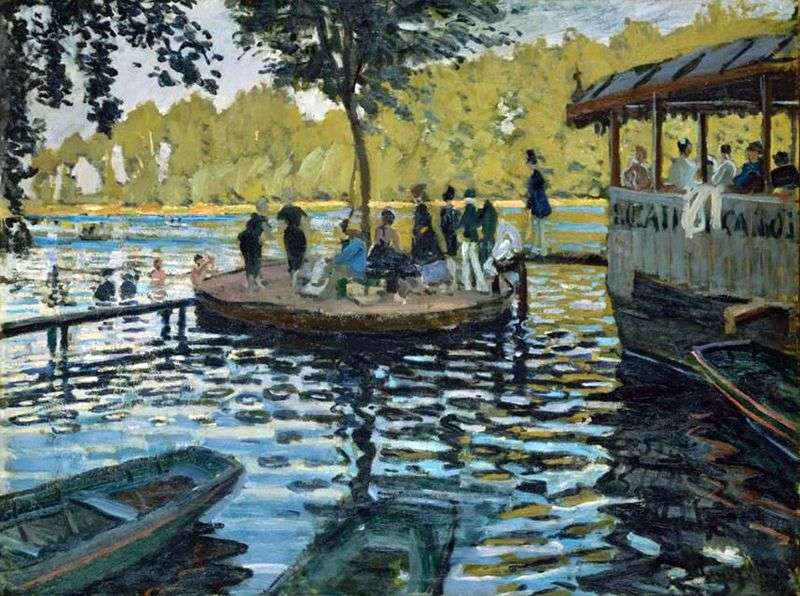 Frog by Claude Monet
Frog by Claude Monet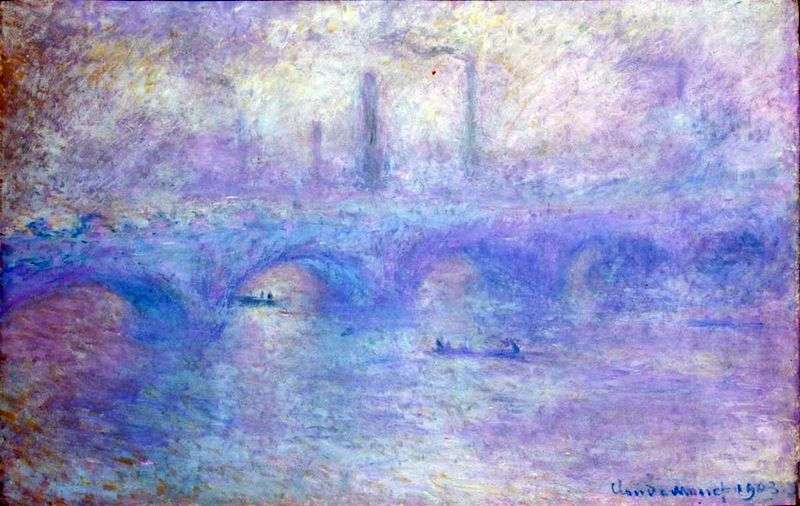 Waterloo Bridge. Fog Effect by Claude Monet
Waterloo Bridge. Fog Effect by Claude Monet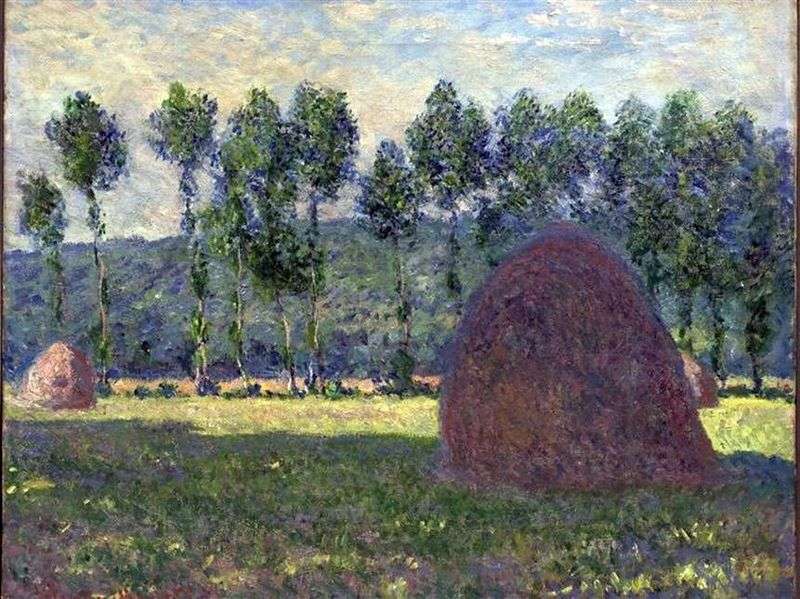 Haystack by Claude Monet
Haystack by Claude Monet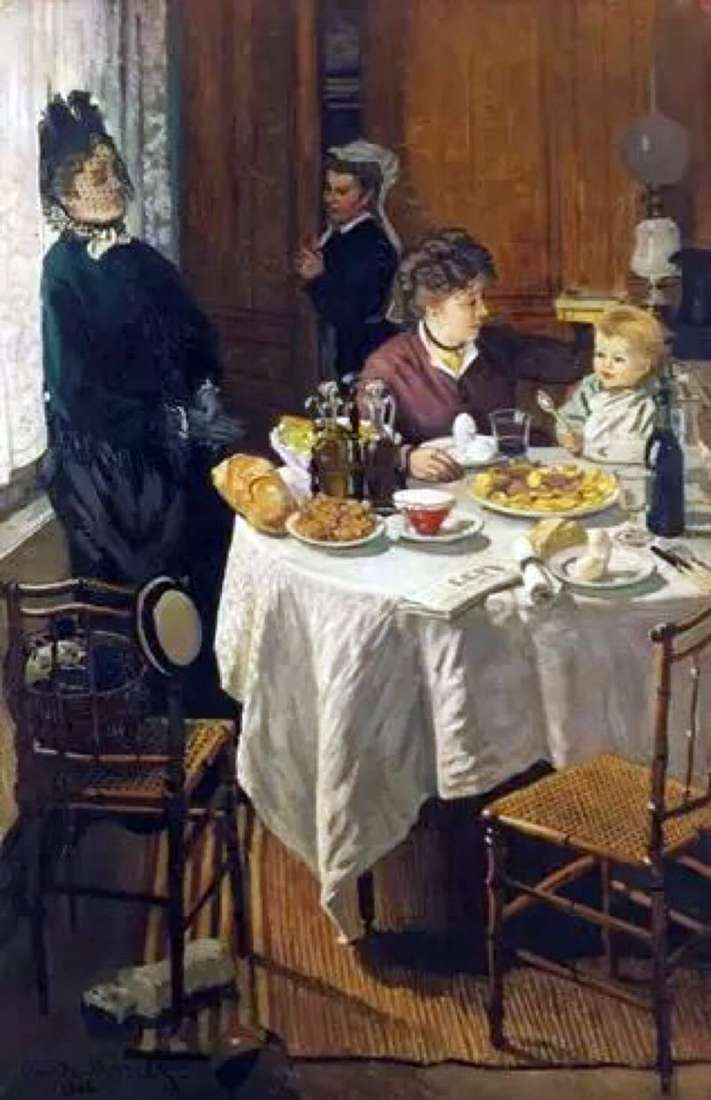 Breakfast by Claude Monet
Breakfast by Claude Monet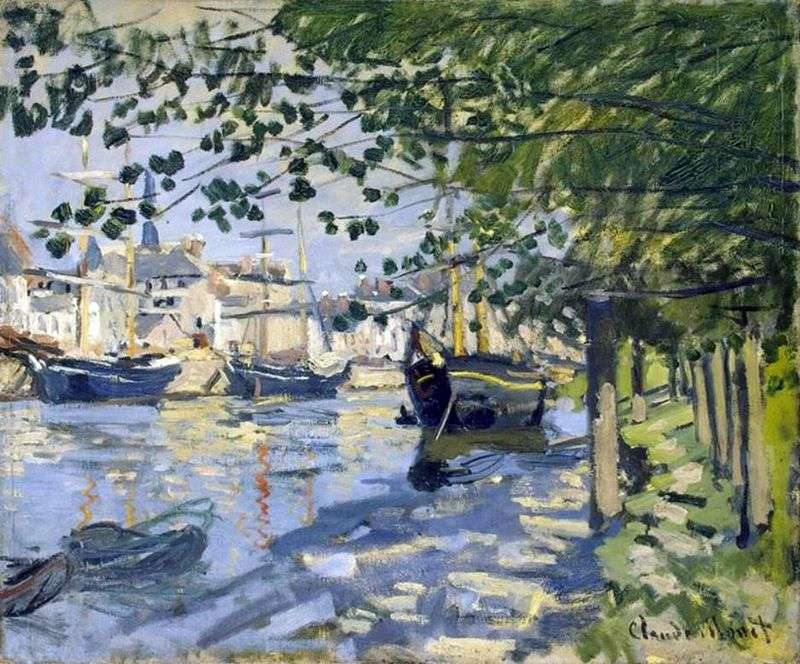 Seine at Rouen by Claude Monet
Seine at Rouen by Claude Monet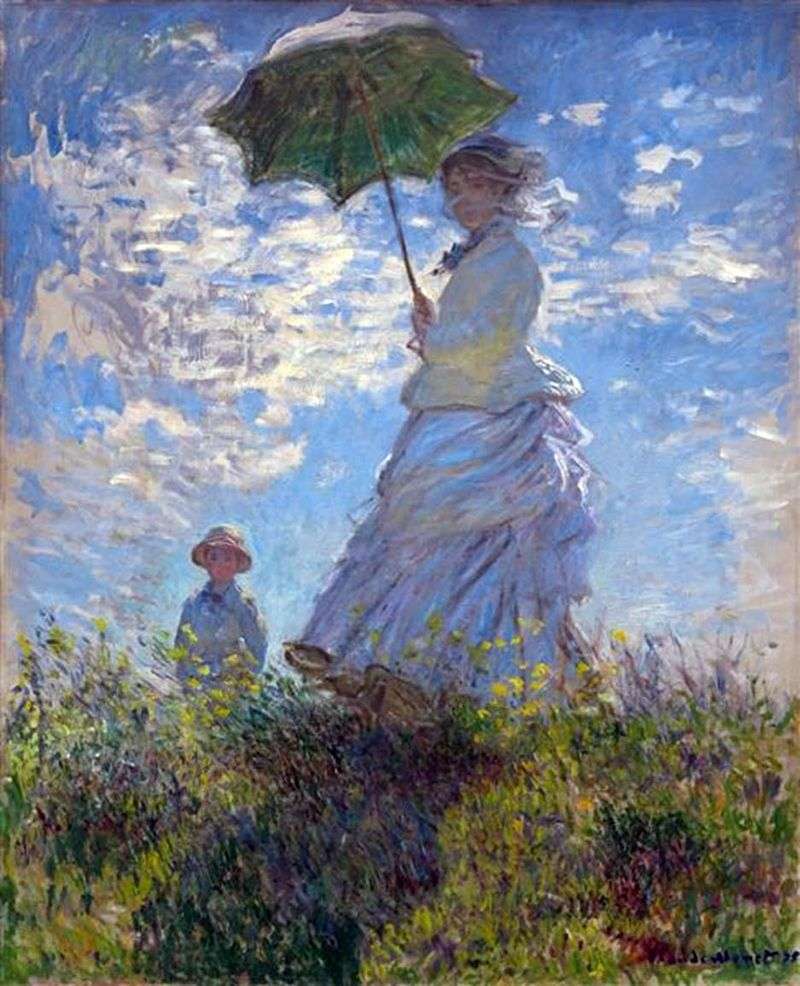 Walk: Camilla Monet with her son Jean by Claude Monet
Walk: Camilla Monet with her son Jean by Claude Monet